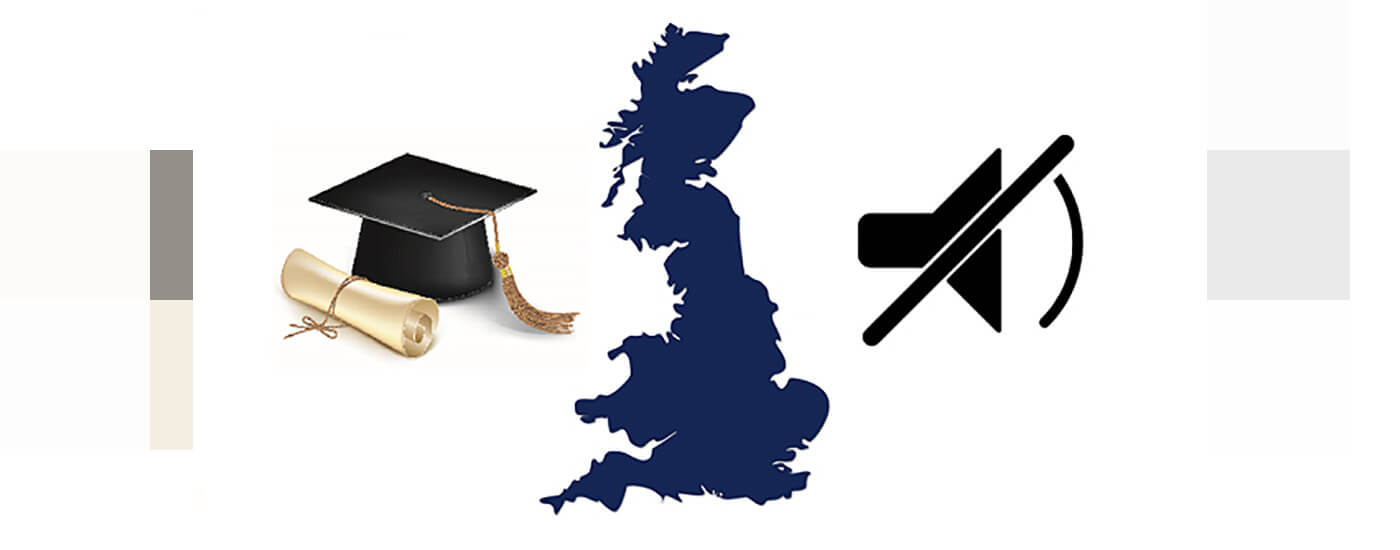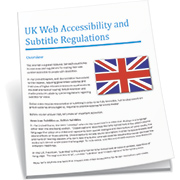UK Subtitle Regulations for Higher Education and Online Learning
Updated: October 20, 2023
Transcription and captioning for online video has become a hot-button issue in American higher education, given the pattern of anti-discrimination lawsuits brought against universities for insufficient accommodation of deaf and hard of hearing students.
While there are looser subtitling requirements in the United Kingdom, some British universities are taking a proactive approach to web accessibility and adding subtitles to their videos.
UK Disability Laws that Affect Subtitling in Higher Education
Institutes for higher education are bound by the same over-arching anti-discrimination protections as any entity in the UK. Unlike the broadcast and telecommunications industry, which has strict specifications for subtitling, British universities and distance learning organizations must make their content reasonably accessible.
Equality Act of 2010 (EQA)
The Equality Act of 2010 (EQA) is Great Britain’s landmark anti-discrimination law, comparable to the US’s Americans with Disabilities Act (ADA) in scope and impact. The EQA condensed and replaced over 116 anti-discrimination laws into a single bill that protects individuals’ civil rights regardless of gender, sex, age, religion, political affiliation, disability, marriage status, or sexual orientation. Employers are required to make “reasonable adjustments” to accommodate people with disabilities. Accessibility requirements extend to public entities and universities, as well.
The Equality and Human Rights Commission of Great Britain published a comprehensive guide that clarifies – in plain English – the requirements of employers, service providers, and institutes of higher education to accommodate people with disabilities.
The Equality and Human Rights Commission summarizes the points in the EQA that address fair accommodations for students:
You must not discriminate against a student:
- In the way you provide education for the student
- In the way you give the student access to a benefit, facility, or service
- By not providing education for the student
- By not affording the student access to any benefit, facility, or service
- By excluding the student
- By subjecting them to any other detriment
With the proliferation of web-based content in course materials, it follows that British colleges and universities must legally make online multi-media accessible to students with disabilities. That means providing Braille, large-print, or screen reader versions of coursework to students with low vision, and transcribing and captioning videos for students who are deaf or hard of hearing.
Standards for Web Accessibility in the UK
While the EQA protects the rights of people with disabilities to access content on the Internet, it doesn’t get specific. British organizations consult a few different sources to form their accessible web design standards.
British Standard 8878 (BS 8878)
In 2010, BS 8878 was published by the British Standards Institution (BSI), an independent body that sets quality standards for goods and services in Britain. BS 8878 covers accessibility standards for all web products, including websites, cloud-based software, web apps, and email.
Mercifully, it translates web accessibility requirements into laymen’s terms. After an orientation on the basics of accessible design, it outlines an actionable accessibility strategy. It even provides templates for writing your organization’s accessibility policy statement. Jonathan Hassell, chair of the BSI committee responsible for BS 8878, describes it as follows:
Institutions in the UK are under no obligation to use BS 8878, but it is a highly reputable and useful guide.
WCAG Standards
Web Content Accessibility Guidelines (WCAG) 2.0 is the internationally recognized digital accessibility standard set by the World Wide Web Consortium (W3C). Regulatory bodies around the globe acknowledge WCAG for best practices in accessibility, whether formally or informally.
It sets tiered levels of accessibility (A, AA, and AAA) in ascending strictness. There are two versions of WCAG: 1.0 and 2.0. The former categorizes design elements based on whether a web developer must, should, or could accommodate all users. WCAG 2.0 measures the degree to which a website observes all four accessible design values: making web content perceivable, operable, understandable, and robust.
Many reputable British universities cite WCAG in their accessibility policy.
Oxford University adheres to Level-AA standards of WCAG 2.0.
The University of Cambridge requires that all new web pages conform to at least WCAG 2.0 level AA – or AAA whenever possible – and that all existing pages meet a bare minimum of WCAG 1.0 level A.
Time-synchronized subtitles for pre-recorded video, or transcriptions for audio content, are required of even the lowest level of WCAG compliance, so any British institution that seeks to observe proper accessibility must transcribe and subtitle their videos.
—
Want to learn more about subtitling rules in the UK? Download our free brief for an in-depth look at British subtitling regulations.

Subscribe to the Blog Digest
Sign up to receive our blog digest and other information on this topic. You can unsubscribe anytime.
By subscribing you agree to our privacy policy.







